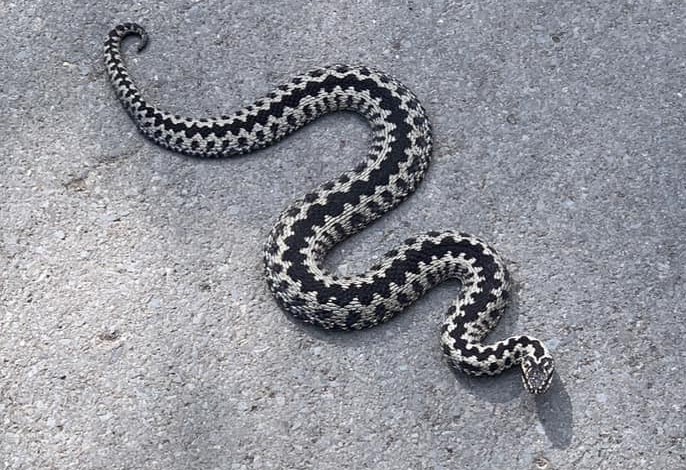
As we move into spring adders will be coming out of hibernation. Adders are most commonly found on dry, sandy heaths, sand dunes, moorlands and woodland edges.
Adults adders are up to two feet long and have a black or brown zigzag pattern along their back – check out the photo of the one spotted by one of our veterinary nurses, Claire, last year. Adders may bite in self defence if disturbed by a dog (or human). Most bites to dogs occur on the face or legs. If you are walking in a known high risk area, keep your dog on a lead.
Signs of an adder bite can include rapid and worsening swelling around the bite site, pain, vomiting, lethargy, bleeding and collapse.
What should you do if your pet has been bitten by an adder?
- Do not interfere with the bite or apply a tourniquet.
- Do not kill the snake – it is a protected species. Leave it alone.
- Carry your dog back to the car if possible, and contact a veterinary surgery for advice. If you are on holiday in a high risk area make sure you have contact details of a local vet saved on your phone.
